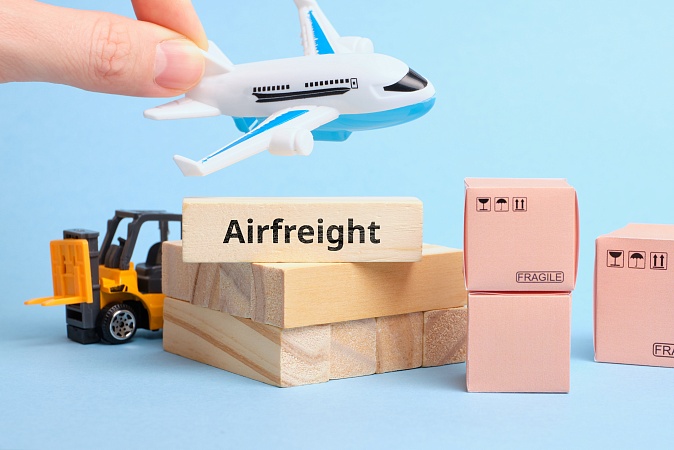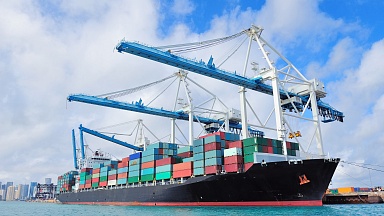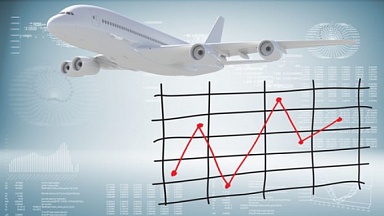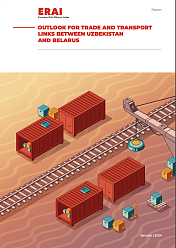Air freight exports from China and other parts of Asia are picking up again as worsening congestion and capacity issues add to backlogs of ocean freight cargo and increase the volumes of ocean-to-air freight conversions — increasingly including some non-premium consumer goods being shipped by air.
European air freight forwarder Senator International is among several recently highlighting the surge in ocean to air conversions, noting that «the situation in China’s ports — especially Yantian-Shenzhen region — is having a massive impact on supply chains worldwide. Cargo is already switching to air freight in some cases. Demand for air freight to South Africa is also expected to increase again due to delays in sea freight.»
And its latest air freight market update yesterday, US freight forwarder Flexport noted that air exports from north and south China were «picking up and showing stronger demand towards (the) month- and quarter end», highlighting that the «backlog in ocean markets adds incremental demand due to ocean-to-air conversions».
Non-premium consumer goods moving by air
Seko Logistics last week said the well-documented «conversion» of some ocean freight shipments to air due to the on-going logistics difficulties in the maritime sector now extended to a range of non-premium consumer goods that would normally be transported by container ship, the modal shift being principally driven by cross-border e-commerce and to a lesser extent, traditional bricks and mortar retail.
The freight and logistics group’s chief growth officer Brian Bourke noted: «This pivot to air freight is a big pivot. The old saying is that ‘air freight is nothing but ocean gone wrong’. That’s not the case. A lot of our clients build their supply chains around air freight because of either the demand for their goods and the value of the goods themselves. But with that said, we are seeing clients leverage air freight as an option, when they can, for commodities at the bottom end of the price spectrum, especially for large items.»
He continued: «We’ve shipped hot tubs, we’ve shipped bikes, and I believe we’ve shipped leaf blowers too and even grills — commodities that typically would not be transported by aircraft. Now, I don’t mean we’re going to see this (ocean to air conversion) for things like sofas or luggage; but there are a lot of other commodities that we are pivoting to air freight and it’s really driven by two things — firstly e-commerce. A lot of our clients have really made it their position not to run out of inventory, and if that means for a couple of weeks they have to spend a lot more (on shipping costs), so be it.»
‘Swallowing the pill’
Bourke said Seko’s own recent analysis revealed that «the conversion was 3x, meaning that even with ocean rate levels as high as they are, it would still cost three times more on the transportation side to pivot to air freight. Obviously, the density (of the goods) is a factor, and that can change depending on the client.
«That (cost difference) is still too big a pill for some clients to swallow, but we are seeing some of them swallowing it and spending that money — and taking advantage of lead times for reception of goods of say five days versus four months — because they want to be the company that has that commodity in their inventory, ready to ship domestically in their home market. It’s the difference between a lost sale and a lost customer and not. So, it makes sense.»
Seko is also getting a further boost to its cross e-commerce air freight offering as a result of «postal options becoming less and less palatable due to the Universal Postal Union changes, whether it be in Asia and which are now coming to Europe. Operators like Seko that are built for e-commerce are handling a lot more of this cargo than previously.»
Traditional retail
A second driver of this ocean to air freight conversion is traditional retail sales, Bourke noted.
«A lot of manufacturers have deals with retailers that include shelf space, and if they are not able to fulfil on points-of-sale, they lose that shelf space. And so it’s really about pivoting and investing in future sales to make sure they’re keeping inventory flowing on the traditional retail side.
«So all-in-all, these are some of the trends that are driving demand for air freight; and, of course, we are see rates going up or fluctuating on a lot of different trade lanes.»
Capacity challenges
Bourke underlined that SEKO was using all means possible to secure air capacity — including «freighter conversions or ‘preighters’ from traditional passenger airlines’ passenger capacity; cargo operators that traditionally would handle more ‘project-type’ air cargo» and «running our own charters».
He added: "A lot of the demand is driven by cross-border e-commerce and also across air freight’s staple industrial verticals — including traditional pharmaceuticals and medical devices, which have reverted back to pre-pandemic levels. International passenger capacity, which is a large percentage of air freight supply, is not anywhere close to what it was before the pandemic and it won’t be there for a very long time.
"International capacity is returning on some lanes, in particular, to tourist destinations. But the business travel that really drives a lot of (air freight) routes — for example, New York to London — that’s not going to return until 2022, maybe 2023. So, we need to find the capacity and create the capacity to meet our clients’ demands; and we’ll do that.
«Our preference will always be to work with the passenger airlines, because it’s the most efficient and easiest solution. It’s what works for everybody.
«But where that’s not available, we will work with our airline partners, with charter brokers, with cargo airlines — a combination of all of those — to find the capacity that’s needed to meet demand. And we’re seeing that demand across the board, and in particular on the transatlantic routes — and on other key routes, whether it be to Australia, to New Zealand, to Israel to the Middle East, from the US and from Europe.»
Flexport said one area where things had eased somewhat was Taiwan, where it noted that the market «has cooled considerably from the torrid levels at the end of May as reduced factory output from Covid restrictions and more ocean capacity — ships bypassing Yantian — influence air freight demand».
It said rates from Taiwan to the US «have fallen by about $3-4 per kg from the week prior and stabilized at that level. With Taiwan expected to loosen restriction levels by mid-July, a volume rebound is expected.»
But Flexport said air freight demand from southeast Asia «remains very strong, mainly due to reduced capacity». It said Indonesia «is the most acute, with over a week to get a booking and further flights to and from Indonesia cancelled. Thailand remains congested as well,» although Vietnam «has available capacity».





